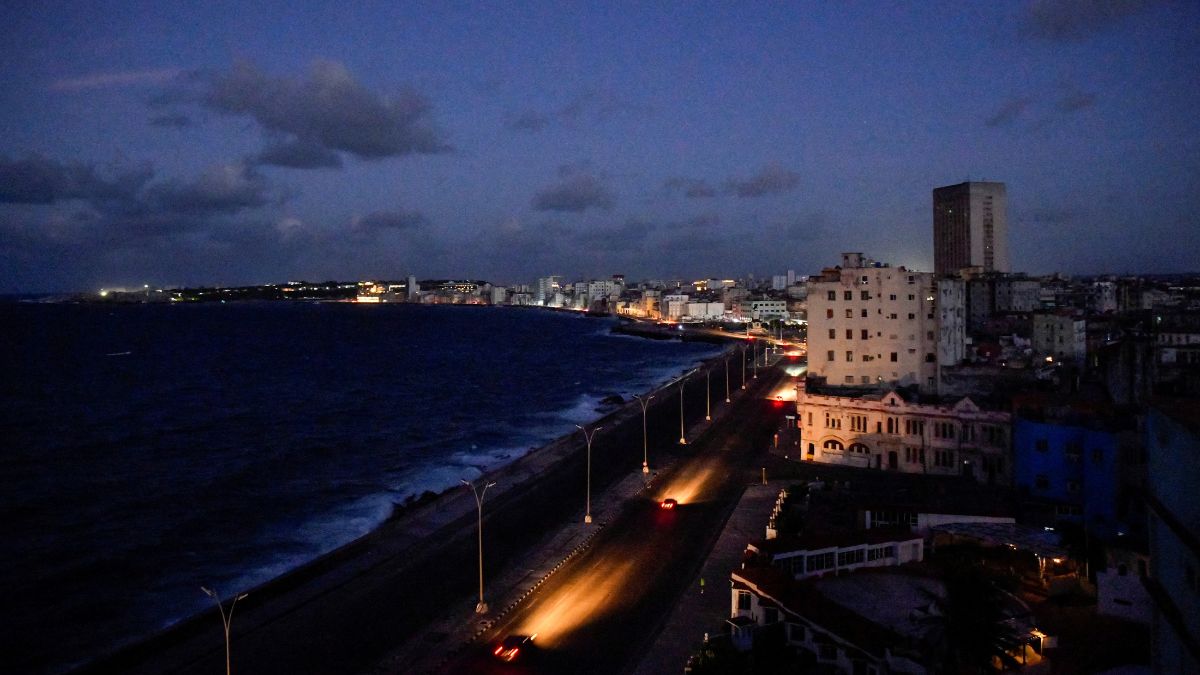Cuba on Friday plunged into darkness after its power grid collapsed, adding to the country’s ongoing problems linked to long-standing infrastructure neglect and economic stagnation. The blackout occurred after weeks of prolonged outages, with some regions experiencing power cuts lasting up to 20 hours a day.
The grid failure began around midday when one of Cuba’s largest power plants failed, cutting electricity for over 10 million people. Prior to this, the government had already sent non-essential state employees home and cancelled school to conserve fuel amid an ongoing energy shortage.
By Friday evening, some areas saw power flicker back on, raising hopes of a gradual restoration. However, despite the progress over the weekend, another collapse occurred on Sunday.
Notably, the Cuban government is grappling with a severe financial crisis, which has led to daily power cuts lasting up to 20 hours. The state is struggling to purchase enough fuel on the global market to keep its five main thermoelectric power plants running.
The island’s economy, which is already in dire straits, has come to a near halt. Non-essential public services have been suspended, schools have closed, and even traffic lights in the capital are no longer functioning.
From its outdated electricity network and heavy reliance on fossil fuels to a lack of investment and the tightening of the US trade embargo, here is an overview of how the communist island reached this critical point:
Weak energy infrastructure
The island-wide blackout is a result of the fragile power generation network, which relies almost completely on fossil fuels and only produces a third of the electricity that is required, as per government figures.
But the country is struggling to buy fuel partly due to the tightened US embargo, which was reinforced during Donald Trump’s presidency. This embargo, originally imposed by Washington in 1962, has further strained the island’s resources.
Most of Cuba’s electricity is generated by eight ageing coal-fired power plants, some of which have been in operation for over 40 years. These plants are prone to frequent breakdowns or are often under repair.
To strengthen its power grid, the country has leased seven floating power plants from Turkish companies and installed numerous small diesel generators. The island is heavily reliant on oil from its key ally, Venezuela, which partly receives payment through the deployment of Cuban doctors. However, Venezuela has drastically reduced its oil shipments to Cuba.
As per online opposition news outlet Cibercuba, Venezuela sent only around 22,000 barrels/day to Cuba in September, compared to 33,700 barrels/day in June.
Meanwhile, the government has launched several projects to develop renewable energy, however, the lack of investment and the US embargo are slowing down the process.
Protests and economics
Cuba is going through its most severe economic crisis since the collapse of the Soviet Union, its key ally in the early 1990s. The country is experiencing severe inflation and shortages of essentials such as food, medicine, fuel, and even water.
While authorities largely blame the US embargo, Cuba is also reeling from the impact of the COVID-19 pandemic, which destroyed its crucial tourism sector, alongside issues of economic mismanagement.
In July 2021, blackouts and skyrocketing food prices led to a rare wave of public protests. Thousands of Cubans took to the streets, shouting “We are hungry” and “Freedom!” in a huge challenge to the government.
During the protests, one person was killed while dozens were injured. Hundreds of people were detained, with 600 still in prison, according to the human rights group Justicia 11J.
Cuban authorities have accused the US of causing the protests. In response to the economic turmoil, the government allowed the formation of private small and medium-sized businesses, a massive shift for the communist nation.
In 2022, fresh protests erupted over power cuts, leading to further arrests. The electricity situation slightly improved in 2023, only to deteriorate again this year.
In March, hundreds of people again held protests in Santiago de Cuba and three other cities to demand food and electricity.
Hurricane Oscar
Tropical Storm Oscar hit Cuba with heavy rains and winds, making landfall as a Category 1 hurricane in the eastern province of Guantanamo near Baracoa on Sunday evening, with maximum sustained winds of 75 mph (120 kph). By late Sunday, Oscar had weakened to a tropical storm, with winds of 70 mph (110 kph), according to the US National Hurricane Center.
The storm’s arrival comes during Cuba’s ongoing recovery from its worst blackout in two years, which left millions without power for several days.
Largest wave of emigration
Amid the crisis, several Cubans have given up hope that things would change and are leaving the country, where the average monthly wage is only around 5,000 pesos ($41).
Cuba is witnessing its largest wave of emigration since the 1959 revolution that brought Fidel Castro to power. Official projections estimate that by 2024, the island’s population will have dropped below 10 million, down from 11.1 million recorded in the 2012 census.
Between January 2022 and August 2024, more than 700,000 Cubans entered the United States, both legally and illegally, according to US officials. This figure does not account for those who have migrated to Latin America and Europe, for which detailed data remains unavailable.
With inputs from AFP


)

)
)
)
)
)
)
)
)



